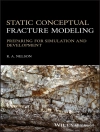Modern seismology has faced new challenges in the study of earthquakes and their physical characteristics. This volume is dedicated to the use of new approaches and presents a state of the art in historical seismology. Selected historical and recent earthquakes are chosen to document and constrain related seismic parameters using updated methodologies in the macroseismic analysis, field observations of damage distribution and tectonic effects, and modelling of seismic waveforms. A critical re-evaluation of historical accounts and early seismograms provides us with the basis for a realistic seismic hazard assessment. This book is dedicated to the memory of Jean Vogt (1929 – 2005).
Audience: This book is of value to seismologists, earthquake geologists, engineering seismologists, earth scientists and historians of catastrophes.
Daftar Isi
Introduction: Jean Vogt Heritage, Learning from the Past.- Jean Vogt 1929–2005: His Life as a Seismologist, Geologist, Geographer, and Historian.- Comprendre et compléter un catalogue de séismes: le cas de Trinidad.- Descriptive Catalogues of Historical Earthquakes in the Eastern Mediterranean and the Middle East; Revisited.- Reappraisal of Historical Earthquake Information.- A Glimpse into the Seismicity of the Ionian Islands Between 1658 and 1664.- Investigation of pre-1700 Earthquakes Between the Adda and the Middle Adige River Basins (Southern Alps).- Past and Future of Historical Seismicity Studies in France.- Review of Historical Earthquakes in the Lower Middle Ages: Earthquakes of the XIV and XV Centuries in Catalonia (NE Spain).- Strong Earthquakes in North-Western Africa in the Second Half of the 17th Century, AD: A Critical Reappraisal of the Historical Evidence.- Case Studies, New Data and Critical Analysis.- The Case for Large M > 7 Earthquakes Felt in the UK in Historical Times.- The 18 September 1692 Earthquake in the Belgian Ardenne and Its Aftershocks.- The 1855 Visp (Switzerland) Earthquake: A Milestone in Macroseismic Methodology?.- In Troubled Times, in a Divided Country: The 1789 Valtiberina Earthquake.- Review of the 1755 Lisbon Earthquake Based on Recent Analyses of Historical Observations.- Quantifying Historical Earthquakes, Effects, Intensity, Magnitude, Seismograms.- Earthquake Effects on Nature and Macroseismic Intensity Scales.- What is the Lowest Magnitude Threshold at Which an Earthquake can be Felt or Heard, or Objects Thrown into the Air?.- Attenuation of Intensity for the Zemmouri Earthquake of 21 May 2003 (Mw 6.8): Insights for the Seismic Hazard and Historical Earthquake Sources in Northern Algeria.- Large 19th Century Earthquakesin Eastern/Central North America: A Comparative Analysis.- Magnitude of Historical Earthquakes, from Macroseismic Data to Seismic Waveform Modelling: Application to the Pyrenees and a 1905 Earthquake in the Alps.- Quantitative Analysis of Early Seismograph Recordings.- Making Non-Digitally-Recorded Seismograms Accessible Online for Studying Earthquakes.
Tentang Penulis
MEGHRAOUI Mustapha
Co-editor of the special volume ‘Active Faulting and Paleoseismology’ in Journal of Seismology 5 (2001).
STUCCHI Massimiliano
Co-editor of the ‘European Macroseismic Scale 1998’












